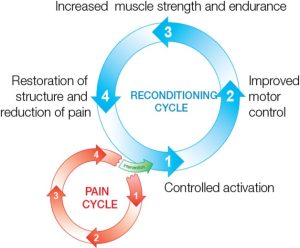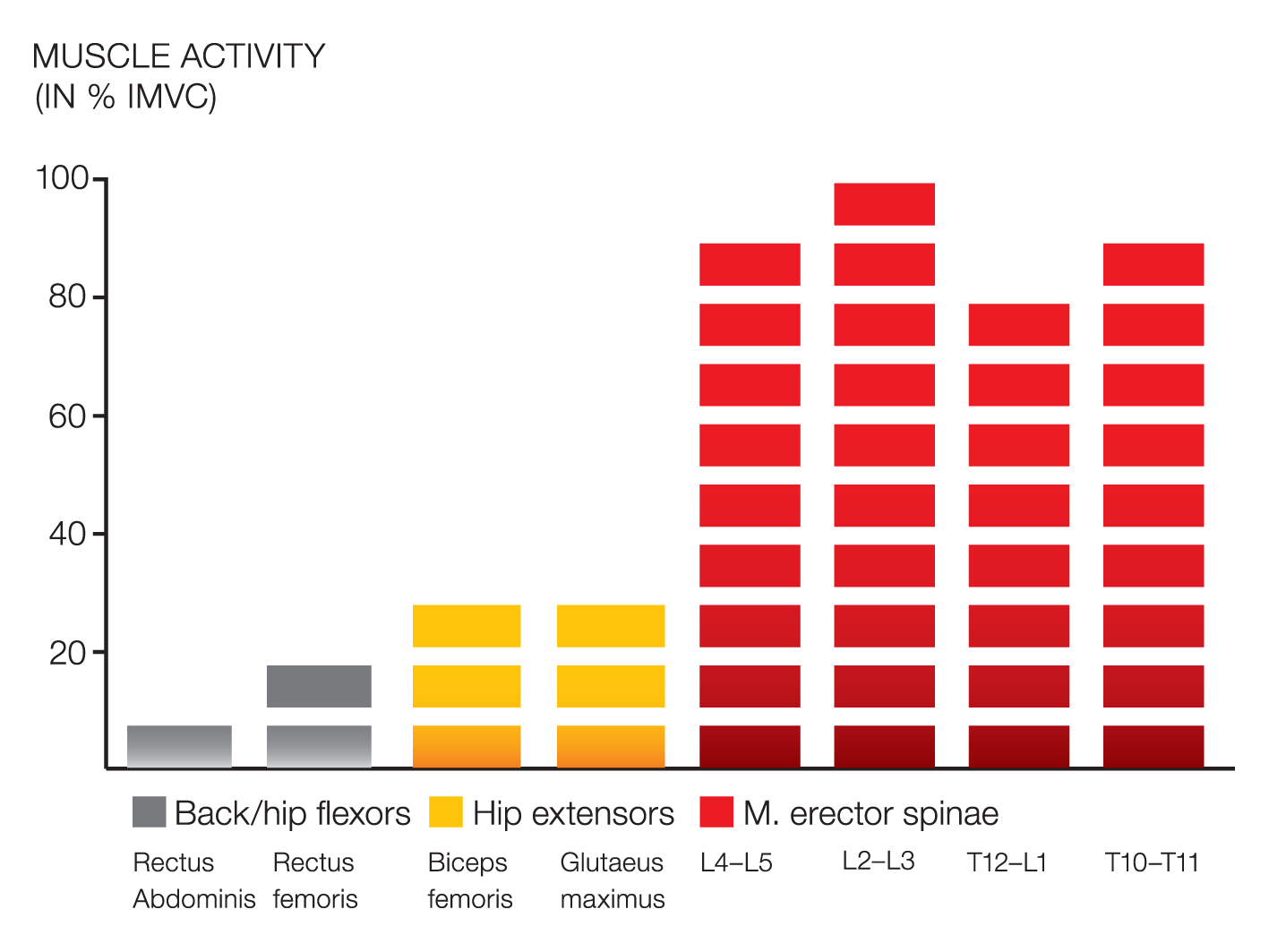Specialized Exercise Equipment for back and neck pain
DAVID Spine Concept, equipped with cutting-edge technology and data-driven solutions, is pivotal in transforming exercise therapy and delivering targeted personalized, measurable patient interventions.
Since its inception in the 1980s, DAVID has been dedicated to developing and manufacturing advanced exercise equipment for various healthcare settings. Over the years, DAVID has expanded its reach to different continents, establishing a robust global presence.
Back pain is among the most common
disorders in western societies.
The First-Line Treatment for Musculoskeletal Complaints
Research and clinical evidence have established exercise therapy as the first-line treatment for musculoskeletal complaints. The effectiveness of exercise in reducing pain, restoring mobility, and strengthening affected areas has been extensively documented in scientific literature and endorsed by physiotherapy associations worldwide.
DAVID Spine Equipment aligns perfectly with the principles of evidence-based exercise therapy. Designed by a team of engineers and exercise specialists with years of experience in rehabilitation technology, DAVID equipment offers exercise solutions for specific musculoskeletal conditions. The equipment ensures gentle joint movement while providing the highest possible neuromuscular training effect, thus making it a powerful tool for physiotherapists in their treatment approach.
Deconditioning syndrome
In most back or neck pain cases, a specific diagnosis, such as disc hernia, is not possible to obtain. However, regardless of the reason for the pain, it will cause immobility, further weakening the strength and coordination of the back and eventually affect the tissue structure.
This can produce a vicious cycle resulting in more pain and loss of function and if prolonged, also psychological effects. When the problem has reached this level, traditional methods of treatment are useless and the possibility for permanent disability significantly increases as time passes.

Data-Driven Device-Based Exercise Therapy
Several studies have shown that movement can act as medicine for painful joints. With joints like the knee, which are relatively simple structures, movements are simple and loading is easy to apply in a controlled manner.
The spine, however, is a very complex structure involving vertebrae, discs, ligaments, dynamically functioning rotator and intervertebrae muscles as well as large, mostly statically functioning supporting muscles.
When pain and loss of coordination is added to the equation, it is extremely difficult to start exercise therapy in a controlled manner. Special devices are required to isolate the target area and provide total control in the movement and loading. All movements should start with limited range and low loading, within the pain tolerance. Time is essential since physiological changes are slow. Ideal treatment should run for three months with an ongoing program afterwards.

Several studies have shown that movement can act as medicine for painful joints.
Indications and contraindications
Most back disorders can be treated successfully with the David Spine Concept.
These include unspecific back pain, degenerative changes, herniations and
post operative situations. Participation requires exclusion by a specialist of
any contraindications and consent by the treating surgeon within four months
of the surgery. Contraindications include tumors, acute inflammations,
and recent fractures. Successful treatment requires patient consent and
motivation to participate.
If exercise is medicine, why don’t we know the dose?
Exercise interventions are poorly reported across a range of health conditions. If exercise is medicine, then how it is prescribed and delivered is unclear, potentially limiting its translation from research to practice.1
With the DAVID Spine Concept, objective measurements can be made using mobility and isometric strength testing. The tests are compared with reference data and the values can be converted into various diagnosis-based training templates.
Treatment program with the help of artificial intelligence
The overall goal of successful treatment is to reduce perceived pain and increase quality of life. To achieve this goal, active therapy must be progressive and in line with the individual’s ability to adapt to the changes.
Treatment is always based on individual assessment. Program progression follows the patient’s subjective evaluation of perceived resistance and pain indicators. A standard Spine Concept program provides a safe start that can be used in the early stages of rehabilitation. Program rules based on biofeedback and artificial intelligence ensure proper training stimulus.
EVE Therapy Software
The comprehensive EVE software platform (available in more than 20 different languages) for healthcare professionals is essential to manage our Exercise Equipment. The software establishes training templates, analyzes patient outcomes and tracks patient satisfaction. The software uses artificial intelligence and algorithms based on patient biofeedback. The EVE software is designed to minimize the administrative burden on therapists so that they can focus on the patient.
- Intake Automation – Email and text intake forms and functional outcomes to patients
- Measuring function – mobility and isometric test functionalities
- Therapy Software – Easily document treatments via daily notes
- Training Programs – Automation of training programs through AI
- Home Exercise – home exercise programs
- Medical Questionnaires – Digitization of medical questionnaires
- Schedule Appointments – via APP and embedded calendars
- Hl7/API Integration – Connect EVE with your existing EMR system or other software/hardware vendors
Patient Engagement with the EVE Mobile App
The EVE app is an interactive mobile app for tracking training data and sharing exercise programs.
- Guidance and tracking for home exercises
- Chat with your therapist or group members
- Manage appointments with your therapist or training group
- Task module with notifications to improve your health
- Overview of training results and reports
Successful business model through data-driven device-based Exercise Therapy
How do you differentiate your center from others and make an investment in Exercise Therapy profitable? Add value to your stakeholders and create a successful business model for physiotherapy, chiropractor practices, hospitals, rehabilitation centers, fitness centers, and elderly centers.
Impact of DAVID Exercise Equipment
DAVID has been developing exercise equipment for physiotherapy centers, hospitals, chiropractor practices, rehabilitation centers, elderly centers, fitness centers, and military bases since the 1980s. DAVID is a world leader in data-driven exercise equipment and has more than 600 installations within medical facilities in Europe, North and South America, Australia, and Asia.
The state-of-the-art exercise equipment is manufactured in Finland (Europe) and is supported by various validation and outcome based scientific articles.
Space efficient solution
The treatment room can be as small as 25 m2.
Scientific Evidence Spine Concept
Validation
Muscle activity in target muscles in different movement directions of the spine
Objective
To analyze the muscle activity of the target muscles compared to other muscles in David Spine devices.
Methods
EMG was used to test the isolation of target muscles during maximal isometric contraction. In 110 and 130 devices also muscle activation during submaximal dynamic muscle work (70% of 1 RM) was tested.
Outcome
Fixation in David Spine devices seems to effectively activate target muscles and inhibit other muscles.

Medical
Active, Targeted, and Measured Device-Based Therapy for Low Back Pain With the David Spine Concept. Comparison of 2 Treatment Protocols.
Objective
To determine the effectiveness of device–based therapy for low back pain.
Methods
Two different treatment protocols with David Spine Concept:
- Extended protocol: 24 sessions, devices: G110, G120, G130, G150.
- Short protocol: 16 sessions, devices: G110, G120. Patients exercised two times per week with 20-40% load, 20 reps, 4,5-5 sec. rep duration.
- Outcome measures: disability (ODI), pain (VAS), functional status (strength, ROM).
Outcome
In both programs there was statistically significant improvement in terms of disability, pain, and functional status after treatment.
Economic
Integrated care for back pain: scientific documentation 2006-2008.
Objective
To investigate if integrated care for back patients (FPZ Concept which includes exercise therapy for spine) leads to economical savings in medical costs compared to standard care.
Methods
Comparative data of standard care and integrated care were made following these two criteria:
1. Data was required from insured persons of a health insurance company who did not take part in integrated care.
2. Retrospective results (period before the start of integrated care) and also prospective results (review of the effects) must be available for this data.
For this purpose, the data was retrieved from a large German health insurance company which was a partner of integrated care for back pain from the start.
Outcome
Integrated care showed statistically significant savings in the following areas: doctor visits, medication and remedies and aids. In category “incapacity for work”, integrated care seemed to be successful if it was started before a time limit of 6 weeks off from work.
Overall the average annual savings were €1,562 per patient
 English
English 



























